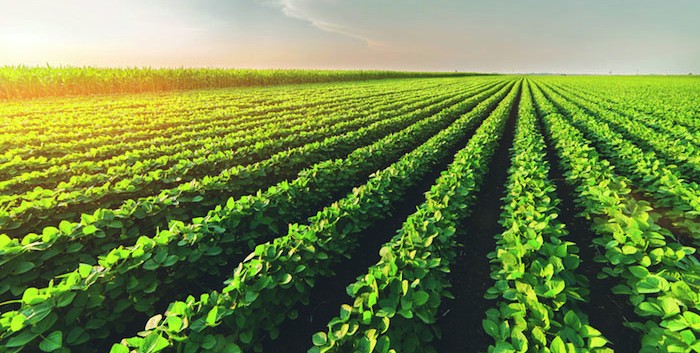The UK pig sector is constantly exploring alternative protein sources, but sustainably-sourced soya remains essential to pork production, NPA chief executive Lizzie Wilson has told the BBC Farming Today programme.
Farmers’ union the Landworkers’ Alliance has joined forces with Sustain, Pasture for Life and UK grain and pulse pioneers Hodmedod in calling for the pig and poultry sectors to reduce global demand for soya to protect the remaining rainforests, while also combating climate change.
In a new report it sought to show how alternatives to soya-based pig and poultry feeds, including home-grown peas and beans, co-products, by-products and food waste, could help reduction this demand for soya. However, it acknowledged that feeding livestock on home-grown proteins would mean reducing our poultry intake by 86% and pork by 82%.
Ms Wilson explained that UK pig farmers have already reduced their reliance on soya. “The pig sector does use a significant proportion of soya, but we have managed to reduce that inclusion by half, and I think we’re at the lowest level now that is feasible,” she told Farming Today (6 mins, 53 sec).
“We can’t just remove soya completely from the diet because it is still the most efficient source of protein available and is easier to digest for the pig, so it creates much less nitrogen out of the back end.”
She pointed out that 70% of soya imported into the UK is accredited as coming from sources carrying no deforestation risk and, of that remaining 30%, around 27% is from land with low risk of any deforestation.
Alternative protein sources were not going to be this ‘magical, cheap silver bullet’ people sometimes think they are because of the logistics and cost associated with them and the lack of efficiency compared with soya, she added.
“If you look at the alternatives, there is no easy and straightforward option. If it was that simple, we would have been doing it by now. Locally-sourced cereals and legumes are far less protein dense, insect protein is still a number of years off and food waste comes with a significant disease risk,” said.
Asked about the need to cut pork and poultry consumption by more than 80% to facilitate alternative proteins, she added: “I’ll let them break that to the general public. At the end of the day we’re still only 40 to 50% self-sufficient in pigmeat in the UK and we are simply supplying a demand.”
Alternative proteins
The British pig industry uses 1.23m tonnes a year of co-product from the human food chain -notably rapemeal, wheatfeed, biscuitmeal, cake, bread, cereal products, starch extraction products and whey – and this accounts for 43.9% of total pig feed produced.
The pig industry has historically used other sources of protein such as meat and bone meal (MBM), which is now referred to as Processed Animal Protein (PAP) and food waste or swill. The feeding of animal protein however was made illegal in all species in 1996, by the EU due to concerns around Transmissible Spongiform Encephalopathies following BSE.
The feeding of food waste, or swill feeding, was banned throughout the EU in 2002 due to notifiable disease risk, following the 2001 foot-and-mouth outbreak.
Generally, alternative protein sources are either not yet commercially available or not available in sufficient quantities to supply both pig and poultry industries, while each comes with its own issues, risks and environmental impact.
- Locally sourced raw materials such as cereals and legumes are less protein dense and use fossil fuel derived fertiliser. Emissions of carbon dioxide from crop production as well as fertilizer production, and methane and nitrous oxide from fertilizer production all contribute to climate change.
- For insect protein, protein quality, scale and cost are the major barriers, particularly given that insects are classed as livestock so can only be fed the same classes of protein as other farmed animals.
- MBM and PAP are deemed to be a disease risk as well as being socially unacceptable to both retailers and consumers. Cross species feeding (pigs to poultry and poultry to pigs) is a credible option, but not yet possible due to issues associated with the contamination test and single species feed production facilities. Cost is also an issue.
- Food waste is deemed to be a significant disease risk at present with associated cost, infrastructure, logistics and quality issues.




